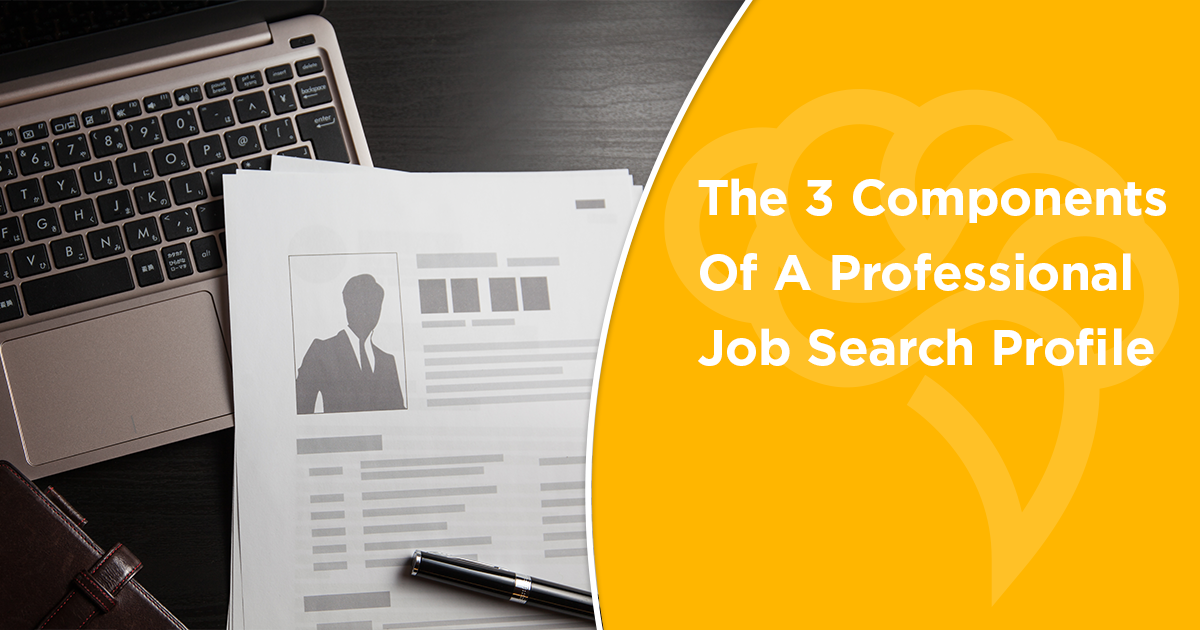The 3 Components Of A Professional Job Search Profile

The components of your professional job search profile are important. If you want to transition into industry, you need to talk the language of industry and show that to potential referrals and employers.
You probably already heard me say this, but do you know what it actually means?
It means you need to know how you are portraying yourself from the very first moment you start planning your transition. Even before you start applying for jobs.
If you are looking to transition into industry, but are applying to positions using an academic CV instead of an industry resume, you are going to fail because you are not coming across as an industry-trained professional, but as an unteachable academic PhD.
Academia and industry speak different languages and value different aspects in a job candidate. That’s why you can’t start your transition journey with an academic mentality.
Every month you stay in academia, your chances of getting a fulfilling industry position decreases because it gets more difficult to show to industry employers that you can unlearn the academic mindset and quickly learn the industry mindset.
So, how do you show industry employers and employees that you are an industry-trained PhD that is worth investing in?
You build a job candidate profile targeted to your dream industry job and make sure that profile comes across consistently throughout your job search.
Whenever you go to a networking event, or plan an informational interview. Whenever you hand your resume directly to a hiring manager or go to a site visit, you should be sending a clear and unequivocal message:
That you are a valuable PhD who can excel at that industry position and will be a great asset to that company.
Recently, I heard the following story from a PhD in our Cheeky Scientist Diamond program:
I am pleased to share with you that I have made my transition #2. Although networking was critical for my first transition, it was the LinkedIn profile that opened the door to this new role. A recruiter contacted me on LinkedIn, we talked on the phone and then a series of 6 interviews started over a 2-months period. Doing a resume and a LinkedIn profile that fits your target position works! I changed my resume and LinkedIn profile to make it more appropriate to project management roles. I got a lot of interest from recruiters for Project Management roles. The strategy worked out at the end.
The Importance Of A Job Candidate Profile
To get hired in industry, you need to craft your professional profile carefully and correctly.
The initial components of your profile are your industry resume and your LinkedIn profile. These will serve as the basis to build the profile that you will portray in person.
Depending on your target position, your profile will require some additional documents and or social media profiles.
For example, if you are applying for medical writing positions, you will need a portfolio with your writing samples.
If you are applying for data scientist positions, you will need to set up a GitHub profile and add your completed data science projects.
But, no matter your target position, your resume and LinkedIn profile are a must.
That being said, you should spend very little time working on those initial components.
You will spend some time at the beginning of your search establishing your target career and the companies you would like to work for. These will serve as the basis for your job candidate profile.
After that, you should spend at most a couple of days setting up your initial resume and LinkedIn profile.
Once you have those initial templates, you will only tweak them slightly as your job search progresses. This shouldn’t take you more than a couple of minutes.
Once you have the initial components ready, you will move to the steps where you should spend the most time in your job search: networking and building industry credibility.
Here is where the final component of your professional profile – how you portray your profile in person – comes into play.
You have to ensure that anyone who interacts with you and then looks at you on LinkedIn or asks for your resume gets a clear message. That your personal interactions are aligned with the information you added to your resume and LinkedIn profile.
Only then will you show to industry employers that you understand their needs and that they can trust you with one of their top positions.

The 3 Components Of Your Professional Profile
As I mentioned, your professional profile has three overall components, your industry resume, your LinkedIn profile, and your in-person profile.
Today, I want to discuss what you should consider when building each of those components. And how they come together to ensure you gain the industry credibility you need.
Keep in mind that before you start working on the components of your profile, you should already know what kind of industry career you are targeting.
1. Resume Profile
An industry resume is not an academic CV. These are two separate documents that have two completely different objectives.
If you are applying to industry positions with your academic CV, you need to stop now and spend some time working on an industry resume.
The industry resume is the first component of your job candidate profile. It is a crisp, focused, 1-2 pages long candidate profile that highlights information specific to the job description.
You can create an initial resume by gathering 10+ job postings for your target position or similar positions. Identify the most sought-after transferable and technical skills.
Make sure to add measurable results. The final document must convey its main message. That you are the best candidate for the position at hand. All in less than 7 seconds because that’s all the time you will have.
Once you have the initial format, it’s just a matter of targeting your resume for each specific position you apply to.

Your targeted resume should not just have one or two skills from the job posting slapped into it. Instead, it should have every technical skill and transferable skill from the job posting.
If you do not have a particular skill on the job posting, still find a way to insert the skill. Mention it alongside the skills you have that are relevant to it. Or you could simply mention your ability to perform tasks related to the skill.
2. LinkedIn Profile
Over 87% of employers use LinkedIn to find talented employees and the number increases every year.
Having a LinkedIn profile is not optional anymore. And you need more than just having a profile, you need a complete profile that is updated at all times.
Make sure to fill in all the sections.
Start with your visual center. Add a profile picture and banner photo that are appropriate and high quality. Your headline should be targeted and to the point.
Follow by filling all the sections of your profile. Use industry language and bullet points, just like you did with your resume.
Keep in mind that LinkedIn’s algorithm is constantly changing. So make sure to follow the latest trends and tips to improve your visibility.
Finally, stay active on LinkedIn. Don’t forget that this is a social network, not a repository for your industry profile.
3. Networking Profile
Once you have the initial components of your profile. Make sure that you convey the same message in your in person interactions.
Your professional profile shouldn’t remain online or in person. It should translate to your in-person interactions.
As such, you need to be prepared. To present yourself as a credible and viable solution to the problem an industry employer is facing. After all, the employer has a job opening because they have a need.
Do you know what that need is? Do you have any idea why the job is open in the first place? If not, you need to find out before you interview with the company.
To get a job offer following any real-time interviewing interaction with an employer requires you to display a certain level of mastery. Not mastery over your skills or over the job at hand, but mastery over yourself.
Self-mastery, more than anything else, is what you are being evaluated on during any industry interview.
Most PhDs find this very hard to believe but it is absolutely true.
Few employers will require anything from you beyond answering a few questions. Just during an interview, which, if you think about it, is absolutely nuts.
Industry employers will pay you tens of thousands of dollars a month. All based on the answers you give during those few short meetings.
Industry employers must commit to hiring you. Based on very little information over a very short period of time, hence they will carefully evaluate your behavior.
They will see how you master yourself under stress.
This is why it is so important that you are prepared. To show in person that you are everything you claimed to be in your resume and LinkedIn profile.
This part takes the most time and practice. Limiting yourself to studying common interview questions is a waste of time.
You need to practice interacting with other professionals in a very professional way behaviorally and you need to start now.

Concluding Remarks
An outstanding job candidate profile will ensure that you convey your value to the industry employers. Communicate that you are a valuable PhD who is ready to fulfil whatever need they have. Start by setting up your industry resume and LinkedIn profile. Then, make sure that your in person interactions are in line with your profile. So you can show your value to employers once the time comes to do job interviews. Only then will you be ready to get hired in your target industry position.
If you’re ready to start your transition into industry, you can apply to book a free Transition Call with our founder Isaiah Hankel, PhD or one of our Transition Specialists. Apply to book a Transition Call here.

ABOUT ISAIAH HANKEL, PHD
CEO, CHEEKY SCIENTIST & CAREER SUCCESS MENTOR
Dr. Isaiah Hankel is the Founder and CEO of Cheeky Scientist. His articles, podcasts and trainings are consumed annually by millions of PhDs and other professionals in hundreds of different countries. He has helped professionals transition into top companies like Pfizer, Tesla, Amazon, Pearson, Google, Apple, Intel, Dow Chemical, BASF, Merck, Genentech, Home Depot, Nestle, Hilton, SpaceX, Syngenta, the CDC, UN and Ford Foundation.
Dr. Hankel has published 3X bestselling books and his latest book, The Power of a PhD, debuted on the Barnes & Noble bestseller list. His methods for getting PhDs hired have been featured in the Harvard Business Review, Nature, Forbes, The Guardian, Fast Company, Entrepreneur Magazine and Success Magazine.
More Written by Isaiah Hankel, PhD































